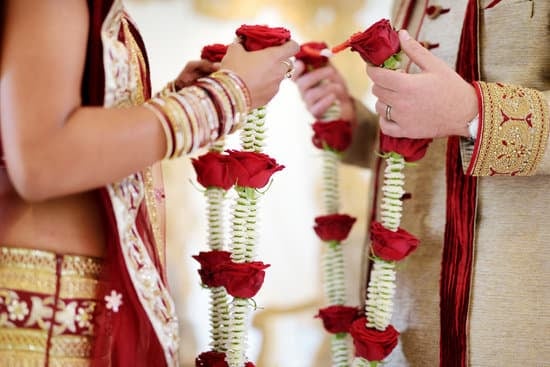Have you ever wondered if all countries wear wedding rings on the left hand? The placement of wedding rings holds cultural, historical, and religious significance that varies across different societies. This article explores the traditions and customs related to the wearing of wedding rings, shedding light on the diversity of practices observed around the world.
The exchange of wedding rings is a timeless symbol of love, commitment, and unity between partners. However, the specific placement of these rings on the left hand is not universally practiced. Cultural traditions play a significant role in determining where couples wear their wedding rings, with each country and society having its own unique customs and beliefs.
From ancient rituals to modern trends influenced by globalization, the wearing of wedding rings has evolved over time. Understanding this diversity in customs can provide insights into the rich tapestry of traditions that exist across different cultures. Additionally, exploring the origins and exceptions to these customs can shed light on how personal preferences and religious significance also influence individual choices in wedding ring placement.
Cultural Traditions
The practice of wearing wedding rings on the left hand is not universal across all countries and cultures. While it is a common custom in many Western societies, there are notable exceptions and variations in different parts of the world. In some countries, the right hand is the preferred choice for wearing wedding rings, while in others, both hands may be used depending on specific cultural or personal preferences.
In Western countries such as the United States, Canada, and most European nations, it is customary to wear wedding rings on the left hand. The tradition is believed to have originated from ancient Roman culture, where it was believed that a vein ran directly from the fourth finger of the left hand to the heart, symbolizing love and commitment. However, this practice is not universally followed around the world.
In many Eastern European and Asian countries such as Russia, Poland, India, and China, it is common to wear wedding rings on the right hand. For example, in India’s Hindu tradition, it is customary for women to wear their wedding ring on their right hand while men wear theirs on the left.
Additionally, in Orthodox Christian countries like Greece and Serbia as well as some Nordic countries like Norway and Denmark, wearing wedding rings on the right hand is more prevalent. Overall, there are diverse cultural traditions surrounding wedding ring placement that vary widely across different nations.
| Country | Preferred Hand for Wedding Ring |
|---|---|
| United States | Left Hand |
| Russia | Right Hand |
Historical Perspective
The wearing of wedding rings on the left hand has been a long-standing tradition in many countries around the world. The practice is deeply rooted in historical symbolism and cultural significance, dating back centuries. But how did this tradition originate, and why is the left hand specifically chosen for the placement of wedding rings?
Historically, the ancient Romans believed that the vein in the fourth finger of the left hand, known as the “vena amoris” or “vein of love,” was directly connected to the heart. This belief contributed to the widespread custom of wearing wedding rings on the left hand as a symbol of love and commitment. This tradition eventually spread to other cultures and civilizations over time.
In addition, in Christian ceremonies, it is customary for couples to exchange wedding vows and rings during their marriage ceremony. The placement of the ring on the left hand is often associated with religious symbolism, representing fidelity and devotion within the context of Christian beliefs. As a result, many Western countries have adopted this practice as part of their wedding traditions.
| Country | Traditional Wedding Ring Hand |
|---|---|
| United States | Left Hand |
| United Kingdom | Left Hand |
| Canada | Left Hand |
Notable Exceptions
In some countries, the tradition of wearing wedding rings on the left hand is not as common as in others. This section delves into the notable exceptions where wedding rings are worn on the right hand.
Eastern European Countries
In Eastern European countries such as Russia, Poland, and Bulgaria, it is customary to wear the wedding ring on the right hand. This tradition dates back to historical and cultural influences, with some beliefs suggesting that the right hand is closer to the heart. In these countries, the right hand is considered more symbolic for marriage and commitment.
Germany and Austria
In Germany and Austria, wearing a wedding ring on the right hand is also a common practice. The tradition stems from a historical belief that the right hand represents strength and power. It has become deeply ingrained in the culture of these countries, with many couples opting to follow this custom when exchanging wedding rings.
Scandinavian Countries
Countries like Norway, Denmark, and Sweden also have a tradition of wearing wedding rings on the right hand. This custom is influenced by historical and cultural factors unique to each country. For example, in Norway, it is believed that wearing the wedding ring on the right hand signifies fidelity and loyalty within marriage.
Despite these notable exceptions, it’s important to recognize that there are diverse customs and traditions regarding wedding ring placement across different cultures and regions around the world. Each country has its own unique symbolism and significance attached to where wedding rings are worn, adding richness to global matrimonial practices.
Religious Significance
Christianity
In many Christian countries, the tradition of wearing wedding rings on the left hand can be traced back to ancient Roman beliefs. It is believed that the Romans thought there was a vein that ran from the fourth finger on the left hand directly to the heart, which they called the “vena amoris” or vein of love.
Over time, this belief became intertwined with Christian symbolism, and today, many Christian-majority countries follow the custom of wearing wedding rings on the left hand.
Judaism
In Orthodox Jewish traditions, wedding rings are often placed on the right hand during the marriage ceremony. This practice is rooted in religious customs and has symbolic significance within Jewish culture. However, in some non-Orthodox Jewish communities and in modern times, there may be variations in ring placement based on personal preference or regional customs.
Islam
In Islam, there is no specific religious requirement regarding which hand a wedding ring should be worn on. As a result, practices vary among Muslim-majority countries. In some regions, it is common for wedding rings to be worn on the right hand, while in others, they may be worn on the left hand. Cultural and regional influences play a significant role in determining these customs.
While religious traditions certainly influence the placement of wedding rings in various cultures, it’s important to note that individual preferences and local customs also play a significant role in determining where people choose to wear their wedding rings. Regardless of religious influence, personal choices and cultural norms can lead to differences in ring placement across different countries and regions.
Modern Trends
In today’s globalized world, the influence of different cultures and traditions has significantly impacted wedding ring customs. While certain countries have longstanding traditions of wearing wedding rings on the left hand, the influx of diverse cultural practices has led to a shift in this custom in some regions. As a result, it is important to consider how globalization has influenced wedding ring placement around the world.
The following are some modern trends that highlight the influence of globalization on wedding ring customs:
- Adoption of Western Traditions: Many countries have adopted the Western tradition of wearing wedding rings on the left hand. This can be attributed to the widespread influence of Western culture through media, entertainment, and globalization. As a result, even in countries with their own unique customs, wearing wedding rings on the left hand has become increasingly common.
- Integration of Cultural Practices: With increased multiculturalism and diversity in many societies, there is a growing trend of integrating various cultural practices related to weddings and marriage. This means that individuals from different backgrounds may choose to wear their wedding rings according to their cultural or religious traditions, regardless of the dominant custom in their country.
- Customization and Personalization: Globalization has also allowed for greater individual expression and personalization when it comes to wedding ring customs. Some couples may choose to deviate from traditional practices and opt for alternative placements or styles based on their personal preferences or beliefs.
Overall, the influence of globalization on wedding ring customs is evident in the increasing diversity and flexibility seen in how couples choose to wear their rings. As cultural boundaries continue to blur and people become more interconnected, it is likely that these trends will continue to evolve in the future.
Personal Preferences
When it comes to the placement of wedding rings, personal preferences play a significant role in determining whether couples choose to wear their rings on the left or right hand. The decision is often influenced by a variety of factors, including cultural background, family traditions, and personal beliefs. Here are some factors that may influence individual choices in wedding ring placement:
Factors Influencing Individual Choices in Wedding Ring Placement:
- Cultural Traditions: Different cultures have varying customs when it comes to wearing wedding rings. Some countries traditionally wear wedding rings on the left hand, while others prefer the right hand. Couples may choose to adhere to their cultural traditions when deciding which hand to wear their wedding rings on.
- Family Traditions: In some families, there may be specific traditions or customs related to wedding ring placement. Couples may choose to honor these family traditions by wearing their wedding rings on a particular hand, as a way of paying respect to their heritage and upbringing.
- Personal Beliefs: For some individuals, personal beliefs and superstitions may influence their decision on which hand to wear their wedding ring. Some believe that wearing the ring on the left hand symbolizes love and commitment, while others may have different interpretations based on their personal beliefs.
Ultimately, the decision of which hand to wear a wedding ring is a deeply personal one for each individual or couple. Whether it’s following cultural traditions, honoring family customs, or adhering to personal beliefs, the placement of wedding rings serves as an important symbol of love and commitment regardless of where it is worn.
Conclusion
In conclusion, the customs and traditions surrounding the wearing of wedding rings vary greatly across different countries and cultures. The question “Do all countries wear wedding rings on the left hand?” has a complex answer, as there are numerous factors at play in determining wedding ring placement. From cultural traditions and historical perspectives to religious significance and modern trends, the diversity of customs regarding wedding rings serves as a powerful reminder of the rich tapestry of global culture.
While some countries do indeed adhere to the practice of wearing wedding rings on the left hand, there are notable exceptions where it is customary to wear them on the right hand. Additionally, the influence of religion and individual preferences further contribute to the variation in wedding ring customs worldwide. The increasing impact of globalization has also led to a blending of customs and an openness to new practices, further enriching the diversity of wedding ring traditions.
Ultimately, understanding the diversity of wedding ring customs across the globe allows us to appreciate and respect the unique practices that hold deep cultural and personal significance for individuals around the world. Regardless of which hand a wedding ring is worn on, its symbolic representation remains universal – a tangible expression of love, commitment, and unity between partners.
Frequently Asked Questions
Which Countries Wear Wedding Ring on Right Hand?
In some countries like Russia, Germany, and India, it is traditional to wear the wedding ring on the right hand. This cultural difference can vary depending on regional customs and personal preferences.
What Religion Wears Their Wedding Ring on the Right Hand?
The Eastern Orthodox Christians typically wear their wedding rings on the right hand. This tradition is based on their religious beliefs and practices which differ from those of other Christian denominations.
What Does Wedding Ring on Left Hand Mean?
In many Western cultures, wearing the wedding ring on the left hand is a symbol of love and commitment between spouses. It has been a tradition that dates back centuries and represents the connection between two hearts through marriage.

I have been involved in marriages for over 20 years helping couples and singles understand more about them.





